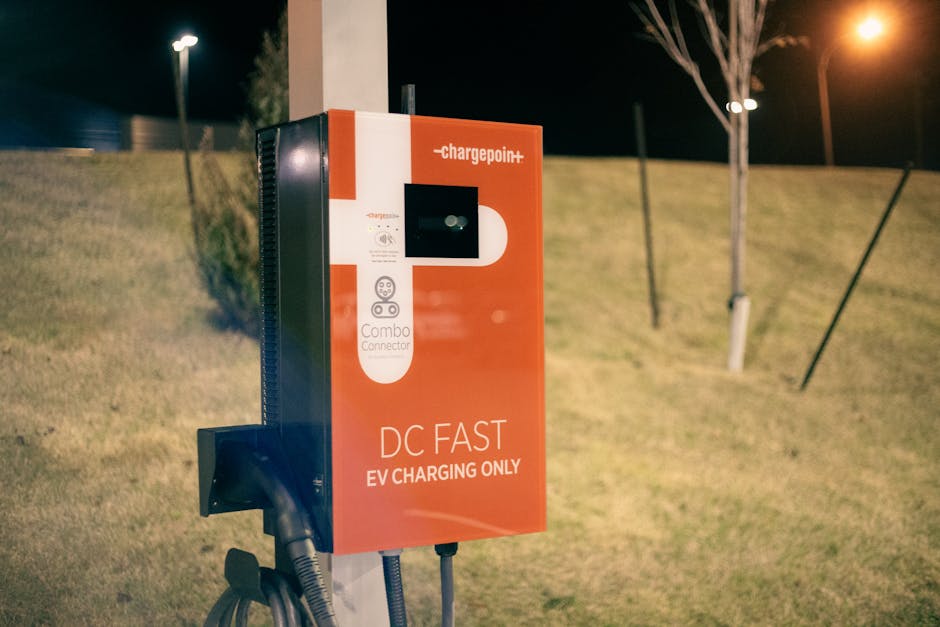How To Use Driving Distance To Pick The Right Electric Car For You
In the world of electric vehicles (EVs), driving distance is a crucial factor to consider when choosing the right car for your needs. It serves as a guiding compass, leading you towards an EV that can seamlessly fit into your lifestyle.
Just like a map guides you through unfamiliar terrains, understanding driving distances can help you navigate the vast landscape of EV options available in the market.
To make an informed decision, it is essential to assess various aspects related to driving distances. This includes understanding EV driving ranges, evaluating your daily commute requirements, considering long-distance travel plans, examining charging infrastructure availability, and evaluating battery range and capacity.
By taking these factors into account, you can confidently choose an electric vehicle that meets your specific needs and desires for control over your transportation choices.
In this article, we will delve deeper into each aspect mentioned above to provide you with valuable insights for selecting the perfect electric car tailored to your driving distance preferences.
Key Takeaways
- Understanding driving distances helps navigate the EV market.
- Factors to consider: driving ranges, daily commute, long-distance travel, charging infrastructure, and battery range.
- Evaluating driving ranges helps determine if an EV meets commuting and travel needs.
- Assessing daily commute habits helps prioritise driving range or energy efficiency.
Understanding EV Driving Ranges

The understanding of electric vehicle (EV) driving ranges allows individuals to assess the distance an EV can travel on a single charge, providing a clear visualisation of the potential limitations and capabilities of each vehicle.
When comparing electric car models, it is essential to consider their driving range as a key factor in making an informed decision. By evaluating the driving range, one can determine whether the EV meets their daily commuting needs and long-distance travel requirements.
Comparing electric car models based on their driving ranges helps users identify which vehicles are suitable for their specific needs. Some EVs offer shorter ranges, typically around 100 miles per charge, while others provide longer ranges up to 300 miles or more. It is crucial to assess your typical daily commute and determine if the chosen EV's driving range alines with your routine. If you have a short commute or access to charging stations throughout the day, a lower-range EV may be sufficient. However, if you frequently embark on long journeys without easy access to charging infrastructure, opting for an EV with an extended range becomes imperative.
Maximising electric car efficiency further enhances the overall driving experience. Efficient EVs utilise energy more effectively and can extend their driving range by minimising power consumption. Factors such as aerodynamics, weight reduction measures, regenerative braking systems, and advanced drivetrain technologies contribute to maximising efficiency.
Assessing your daily commute habits will help determine how important it is for you to prioritise an extended driving range or focus on efficient energy usage when selecting an electric car model that suits your lifestyle. Understanding these factors will enable individuals to make informed decisions regarding which EV best alines with their specific needs without compromising convenience or performance.
Assessing Your Daily Commute

Assessing one's daily commute involves evaluating the distance travelled on a regular basis. This assessment is crucial when choosing an electric vehicle (EV) that suits individual needs. To make an informed decision, it is important to analyse fuel efficiency and explore alternative transportation options.
Consider the following factors:
Distance: Determine the average distance of your daily commute. This will help in selecting an EV with sufficient driving range to meet your needs without frequent recharging.
Charging Infrastructure: Research the availability of charging stations along your commuting route. Having access to convenient charging points can alleviate any concerns about running out of battery power during your daily travels.
Battery Capacity: Evaluate the battery capacity of different EV models. A larger battery capacity means a longer driving range, but it may also come at a higher cost.
Efficiency: Compare the energy efficiency ratings of various EVs to identify those that offer better mileage per charge. Higher efficiency translates into longer driving distances for each unit of electricity consumed.
Cost Analysis: Consider both upfront costs and long-term savings associated with owning an EV. While initial purchase prices may be higher than traditional vehicles, lower operational costs and potential government incentives can make electric cars more affordable over time.
By carefully assessing these factors, individuals can determine which electric car best suits their daily commuting requirements while considering their desire for control over their travel choices.
Once these aspects are evaluated, factoring in long-distance travel becomes the next step in selecting an appropriate electric vehicle option.
Factoring in Long-Distance Travel

When considering long-distance travel, it is critical to evaluate the range of electric vehicles and the availability of charging infrastructure along the desired routes. Planning for road trips in an electric car requires careful consideration of its driving range, as this determines how far you can go before needing to recharge.
Electric cars have varying ranges, typically measured in miles per charge, which can range from around 80 miles to over 300 miles. It is important to assess whether your chosen electric car's range alines with your long-distance travel needs.
In addition to evaluating the driving range of an electric vehicle, exploring charging options for long-distance travel is essential. Unlike conventional gasolene-powered cars that can be refuelled at any gas station, electric cars require access to charging stations or outlets. Before embarking on a long trip, it is advisable to research and identify the locations of charging stations along your intended route. This will help ensure that you can easily find places to recharge when needed.
Fortunately, there are several resources available online that provide maps and databases of charging stations across different regions. These resources enable you to plan your journey effectively by identifying suitable stopping points for recharging. Additionally, some electric vehicle manufacturers offer navigation systems that incorporate real-time data on available charging stations during a trip.
Considering charging infrastructure plays a crucial role in determining the feasibility and convenience of long-distance travel in an electric car. The availability and accessibility of charging infrastructure are key factors that need to be taken into account when choosing an electric vehicle for this purpose. By thoroughly assessing these aspects, you can make informed decisions about which model best suits your needs while ensuring a seamless experience during road trips.
Transitioning into the subsequent section about 'considering charging infrastructure,' it is important to understand how these factors influence the overall suitability of an electric car for both daily commuting and longer journeys without compromising convenience or control over one's travels.
Considering Charging Infrastructure

Considering the intricate web of charging infrastructure is like unravelling a complex puzzle, where every piece must fit perfectly to ensure a seamless and convenient journey in an electric vehicle. One of the key factors to consider when choosing an electric car is the availability of charging stations. The accessibility and distribution of these stations greatly influence the practicality and range of travel for electric vehicle owners.
To help visualise the importance of charging station availability, let's take a look at a hypothetical scenario. Imagine you are planning a road trip from New York City to Los Angeles, covering approximately 2,800 miles. In order to complete this journey in an electric car, you would need to rely on charging stations along the way. A lack of sufficient charging infrastructure could result in significant delays or even render the trip impossible.
To illustrate this point further, let's examine three different scenarios: Scenario A represents an ideal situation with abundant charging stations available at regular intervals throughout the entire route; Scenario B depicts moderate availability with some sections having fewer charging options; and Scenario C portrays limited availability with long stretches between charging stations.
| Scenario | Charging Station Availability | Impact on Electricity Grid |
|---|---|---|
| A | Abundant | Minimal |
| B | Moderate | Moderate |
| C | Limited | Significant |
As shown in the table above, each scenario presents different challenges for EV owners. While Scenario A offers convenience and minimal strain on the electricity grid, both Scenarios B and C introduce varying degrees of inconvenience and potential strain on local grids due to higher demand.
Considering these factors allows prospective EV owners to evaluate their travel needs more effectively when selecting an electric car that alines with their expectations. Evaluating battery range and capacity becomes crucial in ensuring a seamless driving experience without relying heavily on extensive charging infrastructure or risking running out of power prematurely.
Evaluating Battery Range and Capacity

Evaluating the battery range and capacity of an electric vehicle becomes essential in determining its suitability for long journeys, as it directly impacts the distance that can be covered before recharging is required.
One of the key factors to consider is the battery range, which refers to the maximum distance an electric vehicle can travel on a single charge. This information is crucial for individuals who frequently undertake long trips or have limited access to charging infrastructure.
The battery capacity, on the other hand, measures how much energy can be stored in the vehicle's battery. A higher battery capacity means that more energy can be stored and therefore provides a longer driving range. However, it's important to note that increasing battery capacity also increases the weight and cost of the electric vehicle.
When evaluating battery range and capacity, it is also important to consider charging times. Charging an electric vehicle takes longer compared to refuelling a conventional gasolene-powered car. The time required for a full charge varies depending on factors such as the type of charger used and the size of the vehicle's battery. Some electric vehicles offer fast-charging capabilities, which significantly reduce charging times.
In addition to evaluating charging times, comparing cost efficiency is another aspect worth considering. Electric vehicles are generally more cost-efficient than traditional gasolene-powered cars when it comes to fuelling expenses. However, they may require a higher upfront investment due to their technology and battery costs.
Overall, evaluating both battery range and capacity is crucial in determining whether an electric vehicle can meet one's driving needs, especially for individuals who frequently embark on long journeys. By considering factors such as charging times and cost efficiency, individuals can make informed decisions when selecting an electric car that suits their requirements while maintaining control over their driving experience.
Frequently Asked Questions
Are electric cars more expensive to maintain than traditional gas-powered cars?
Electric cars, metaphorically speaking, can be seen as the gentle breeze of financial relief compared to the stormy costs associated with maintaining traditional gas-powered cars.
When it comes to electric car maintenance costs, studies have shown that they are generally lower than their gasolene counterparts.
The absence of complex components such as internal combustion engines and exhaust systems significantly reduces maintenance requirements.
This cost advantage provides a sense of control for individuals seeking affordable and sustainable transportation options.
Can I charge my electric car at home using a regular power outlet?
Charging an electric car at home using a regular power outlet is possible, but it may not be the most efficient option. A regular power outlet typically provides a lower voltage and slower charging speed compared to dedicated charging infrastructure. The charging time will depend on the electric car's battery capacity and the available charging rate.
Additionally, it is essential to consider the electric car range and how far you typically drive in a day to ensure that you have enough charge for your needs.
What is the average lifespan of an electric car battery?
The average lifespan of an electric car battery is typically around 8-10 years or 100,000-200,000 miles. However, this can vary depending on several factors that affect battery degradation.
These factors include:
- Temperature extremes
- Frequency of fast charging
- Depth of discharge
- Overall usage patterns
It is important to consider these factors when evaluating the longevity of an electric car battery.
Are there any government incentives for purchasing an electric car?
There are indeed government incentives available for purchasing an electric car, which can contribute to the overall affordability of these vehicles.
These incentives vary by country and region, but they often include tax credits, rebates, and grants.
Governments offer these incentives in order to promote the adoption of electric cars as a means to reduce greenhouse gas emissions and improve air quality.
Taking advantage of these government incentives can make purchasing an electric car more financially feasible for consumers.
Can electric cars be driven in extreme weather conditions, such as extremely cold or hot temperatures?
Electric cars can be driven in extreme weather conditions, including extremely cold or hot temperatures. However, these conditions may have an impact on the vehicle's performance and range.
Extremely cold temperatures can reduce battery efficiency and result in decreased driving range. On the other hand, high temperatures can affect battery life and overall performance.
To mitigate these issues, manufacturers are continuously developing advanced battery technologies to improve electric car performance in extreme weather conditions. This ongoing research indicates a promising future for electric car technology, with potential advancements that address environmental concerns and enhance driving capabilities in all weather conditions.
Contact us to discuss our services now!

